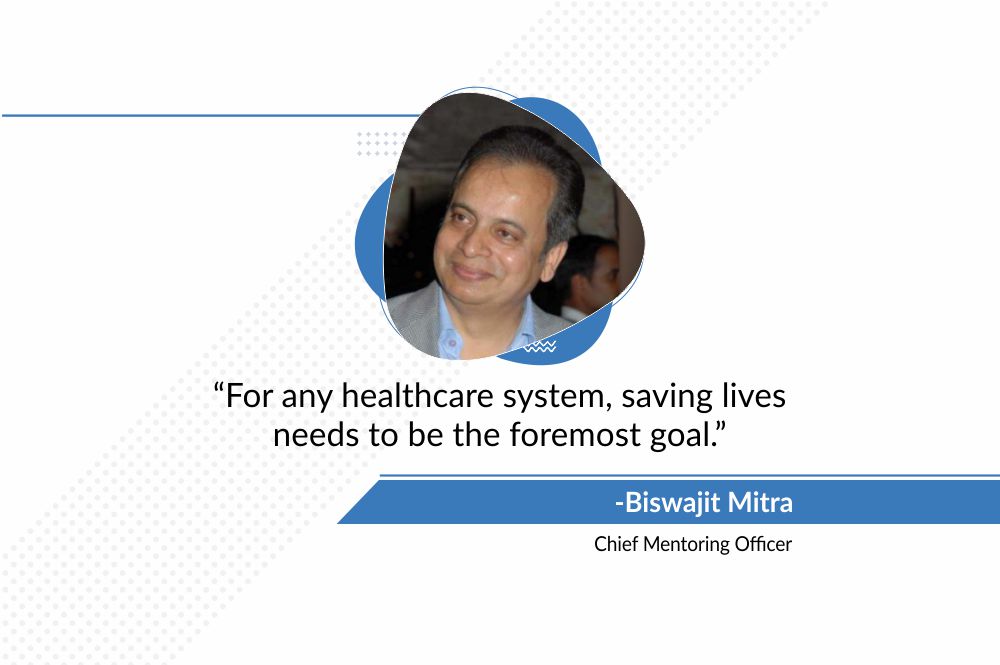

Is Data the New Pill? Moving Towards Digital Health Transformation
27th Jan, 2021
The unprecedented nature of the current pandemic has prompted a shift in healthcare systems. With patients not being able to visit OPDs regularly and staying at home, hospitals and clinics have taken up digital platforms in order to reach out to patients. There has been a surge in telehealth and virtual consultation services. With the objective to make people avail accessible and affordable healthcare, the Ministry of Health and Family Welfare, Government of India has formulated the National Digital Health Mission (NDHM).
NDHM is a mission to harness technology to improve the efficiency, effectiveness, and transparency of healthcare delivery in India, through better access to healthcare data. It seeks to create a national digital health infrastructure starting with the building of Health IDs, Unique Identifiers for doctors and health facilities, Personal Health Records, and Telemedicine and e-Pharmacy, among other components. With India riding on the wave of accelerated digitalisation, we spoke to our Chief Mentoring Officer, Mr Biswajit Mitra about the importance of a successful NDHM implementation.
“The National Digital Health Mission is a great step in revolutionizing the healthcare in India. If done properly it can not only help bridge the rural and urban healthcare gap but it can also help in bringing more awareness through communication of healthcare schemes and awareness campaigns. The benefits of something like a National Digital Health Mission are many and can have a positive impact on multiple industries like- insurance, public health, hospitals and on doctors, patients etc.
Indians meet more than 62% of their health expenses from their personal savings, compared to this; individuals in US spend 13.4%, in UK spend 10% and in China spend 54%. With NDHM we have a chance to make all this simpler and reduce the healthcare burden. A successful NDHM can make a direct difference in the progress towards UHC. It can help make Universal Health Coverage possible and make implementation of digital health a reality. With NDHM one can start imagining an oncologist diagnosing early stage cancer of a patient in a remote village and the patient getting the required treatment with easy exchange of healthcare information and medical insurance.
With the successful implementation of NDHM, we have the opportunity to standardise healthcare data. It is important to set up interoperability standards so that there is a common language for data exchange between clinics, labs, hospitals etc. In the west, HL7 and SNOMED are some of the standards, which are used. India could adapt these for the Indian population.
Challenges in the NDHM Program
While the opportunity is huge, the challenges for setting up NDHM are equally daunting. One of the biggest hurdle is data collection and healthcare IT infrastructure. The population of India alone makes it tough for us to build up a good authentic database. The total health expenditure of India is 3.6% of the GDP and out of this, public expenditure is slightly more than 1%. When you analyse this there are huge gaps still existing in the healthcare infrastructure in India vs other countries. In a country like India with diverse population groups, overcoming social stigma surrounding some healthcare issues might also be a hindrance in collecting the right dataset.
While data collection and healthcare IT infrastructure are perhaps the foreseeable challenges, if digitisation is completed successfully, then privacy of data and ethical use of data are perhaps some challenges that need to be taken care of. Another important aspect that could hinder the success of NDHM is the cost of healthcare on the individual. If building of infrastructure and digitisation of healthcare data increases the cost burden then the success of the program will be difficult. The awareness of medical insurance to reduce the burden of healthcare cost on household income is very important. This will not only help get reliable data but also bridge the rural-urban gap in healthcare.
Future of NDHM
Harnessing the reach of digital media and mobile penetration can help make NDHM a success story. The internet penetration as per Statista in India is around 50% and approximately 450 million users are mobile internet users. These numbers and the current growth itself suggests that in the future this number will only increase. With this, the implementation and communication through technology would become easier. Arogya Setu app is an example of how this could work in both rural and urban. However, this calls for investments in the hardware and software sector. While some portion would be supported by the digitalisation at Primary health Centres, Sub Centres and Community Health Centres, the other portion should also be supported by various digitalisation schemes at the rural level.
Another important player in the success of NDHM is our private healthcare partners. According to the National Family Health Survey-3, the private medical sector remains the primary source of healthcare needs for 70% households in urban areas and 63% households in rural areas. The public healthcare infrastructure still needs to be built up to support the digitalisation process. Until this happens, the private healthcare stakeholders will have to support the healthcare system of the country.
The best of countries have been investing in digital healthcare. Be it Canada, Europe, Australia or America they have been able to implement electronic medical records, payer led healthcare with varied success rate. These countries have some of the best healthcare systems in the world and yet digitalisation has not been easy. This does not mean it is not necessary. It is important that we move towards digitalisation not only to ensure that that availability of quality care is better for all but also so that situations like COVID-19 can be prevented or controlled. For any healthcare system, saving lives needs to be the utmost goal. “

